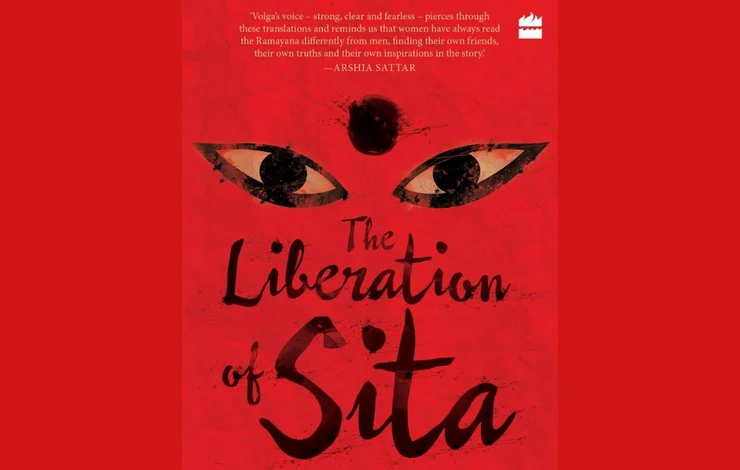Volga’s ‘The Liberation of Sita’. Review by Aardra
The first time I took any active interest in Ramayana was in 9th grade. We were asked to study a one-act play called ‘Raj Rani Sita’ written by a prominent Hindi literary scholar, a man, Ramkumar Verma. The premise of the play was an interaction between Sita and Hanuman discussing Rama’s heroism through various references to the subplots of Ramayana, Sita’s duty as a wife and her wish for Rama himself to come rescue her from Ashokavana which rendered her a vapid damsel in distress in my opinion. It confused me as to why the text was portraying a surreal image of a submissive, selfless, and subservient person as the woman we must aspire to become.
As a budding feminist, I was easily enraged by stories about women who were not their own knights in shining armor but as a young reader I was yet to recognize that these stories often tried to enforce a patriarchy-vetted image of an ideal woman upon us. The Liberation of Sita is the feminist retelling the 14-year-old me had not known she needed.
The book opens with Sita trudging through life after being publicly abandoned by Rama and finding refuge in Valmiki’s Ashram, where she raised her two adolescent sons, while otherwise living a life of imposed solitude. When she runs into an old acquaintance, a journey to self-discovery is sparked as Sita is compelled to ponder upon the circumstances that life had in store for her and how the choices made for her by the men in her life shaped her as an individual.
Volga traces Sita’s path to self-realization through the stories of all the remarkable women that she has either met in the past or meets along the way. She explores numerous themes within each woman’s experience– be it challenging conventional beauty norms, the objectification of women and the redundancy of wars through Surpankha; touching upon rape, infidelity and the credibility of a woman with Ahalya’s advice; questioning the institutions of patriarchy- marriage, religion, caste by the means of Renuka’s experience and the power of self-authority owing to Urmila’s conversation with Sita.
These conversations aid Sita in comprehending the rationale behind many of her choices, opinions and beliefs. They help her accept the past, embrace her newfound definition of womanhood and revel in it, ushering her towards liberation from the shackles of a patriarchal society.
Unlike the stories of Ramayana that have been regaling us since childhood, this book empowers Ahalya, Surpankha, Renuka and Urmila by telling us their untold stories, chronicling their strength, bravery, intelligence, wisdom, persistence, creativity and all the other qualities that were never spoken of these women.
The Liberation of Sita reinforces the power of the female perspective by rejecting the generations old notion of Sita as the stereotypical damsel in distress. It reveals her as an assertive, thoughtful, and independent woman. Looking at Sita from such a fresh perspective made me realize that the disappointment and dislike I felt towards her as a 14-year-old was because of the patriarchal lens I was forced to view her through. Re-viewing her life and choices from the feminist perspective have turned it into pure respect and admiration.
While the central plot of the book revolves around Sita’s path to self-realization, Volga infuses this sublime assortment of tales with subplots of single motherhood, friendship, sisterhood, romance, and familial relations. She goes above and beyond morality, pride, honor and instead delves deeper into the nuances of being flawed making all the characters (even Rama) accessible, relatable and most of all human.
The other thing I realized was that I probably would have held my views, which were a result of years of biased storytelling, for lifelong had someone not written something challenging the general narrative. This is why we need to speak out and write and tell and retell stories, so that someone somewhere may be helped to rethink!
The epics of Ramayana and Mahabharata are recounted to us by elders with the aim of teaching and internalizing the Indian culture, morals and values that form the very crux of us as humans. But more often than not we tend to overlook some of the deeply problematic perspectives that are being propagated through what may seem like innocent tales about mythological characters.
This rendition of the epic forces us to re-examine the source of the skewed societal principles we are taught as kids, to reflect on what exactly are the morals of these stories and compels us to ask the question:
Isn’t it about time we changed the narrative?
An ASAP Youth Champion, Aardra is a veterinary student and a vocal abortion and gender rights advocate from Mumbai, India.






